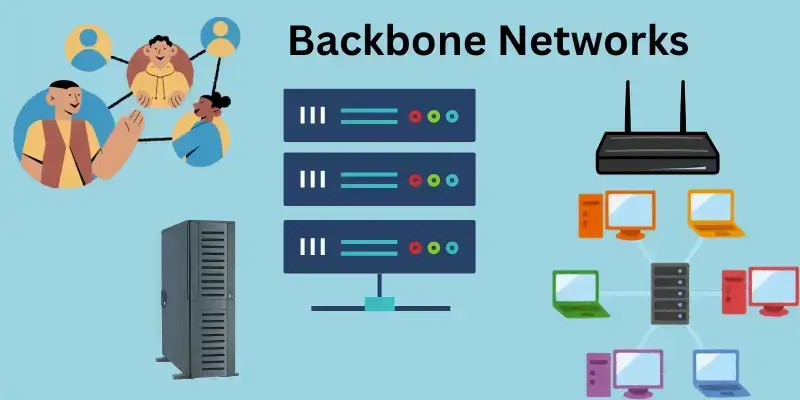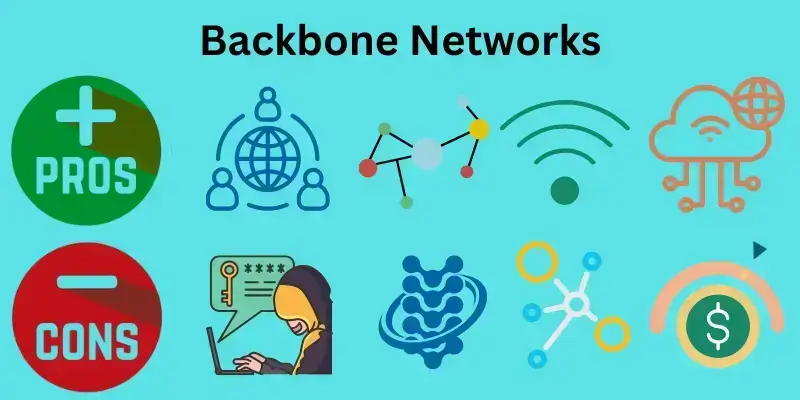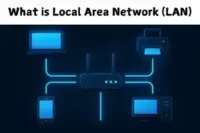What is Backbone Network?
Published: January 12, 2025
Imagine a city where all the roads connect to one big highway, making it easy for people to travel everywhere. The backbone network is like this big highway in the digital world. It connects smaller networks and helps data travel fast and smoothly, like cars on a clear road. Without it, everything would slow down, and devices wouldn’t be able to talk to each other properly.

What is Backbone Network?
A backbone network is the main connection that links smaller networks together. It helps data travel quickly and smoothly over long distances.
Why Backbone Network is Important Today and Its Impact on the Future
The backbone network is our digital world’s unsung hero(Silent worker). Without it, we’d face slow speeds, constant disruptions, and a lack of connectivity. Think about it—every time you stream a video, shop online, or connect with friends on social media, the backbone network works behind the scenes to ensure everything runs effortlessly.
But the importance of the backbone network doesn’t stop here. As we dive into the age of smart cities, 5G networks, and an explosion of connected devices, backbone connectivity becomes even more critical. With the rise of the Internet of Things (IoT), faster speeds, and larger data demands, it must keep pace with technological growth. In the future, this network will be the foundation of everything we do—running businesses, powering industries, or keeping us connected in new and innovative ways. The backbone network isn’t just important today; it’s shaping tomorrow’s digital world.
Types of Backbone Network

Backbone networks come in different types, each for specific needs and sizes. These types help data move quickly and smoothly between networks.
- Switched Backbone
- Collapsed Backbone
- Distributed Backbone
- Point-to-Point Backbone
1. Switched Backbone
A switched backbone sends data through different paths depending on which route is the fastest. It changes paths if needed to keep data moving quickly.
Usage: This type is used in big networks, like the internet backbone, where data needs to find the quickest route to reach its destination.
2. Collapsed Backbone
A collapsed backbone combines the main network with other parts, making it easier to manage. It’s simpler and smaller.
Usage: Small businesses or home networks use this because it keeps everything in one place and is easy to manage.
3. Distributed Backbone
A distributed backbone has multiple connections spread out in different places. If one connection breaks, others still keep the network working.
Usage: Large companies with offices in different cities use this to ensure they stay connected even if one connection fails.
4. Point-to-Point Backbone
A point-to-point backbone is a direct link between two places. It’s fast and reliable because it has no interruptions.
Usage: This type connects a company’s main office to a branch office, ensuring the connection is strong and fast.
Backbone Network Solutions: Technologies and Strategies for Efficient Data Transfer
Backbone network solutions are technologies and strategies that help design, build, and manage the backbone of a network. These solutions ensure data can travel quickly, securely, and without interruptions across large networks. Here are some common backbone network solutions:
- Fiber Optic Cables
Fiber optic cables are used for high-speed data transmission over long distances. They are the most common choice for backbone networks because they can quickly carry large amounts of data with minimal signal loss.
- Routers and Switches
Routers and switches are used in backbone networks to direct data traffic efficiently. Advanced routers and high-performance switches ensure data moves smoothly between different network parts.
- Redundant Paths
Redundancy is key to ensuring reliability. Using multiple data paths means that if one path fails, the backup path can take over, minimizing downtime.
- Cloud-Based Networks
Cloud solutions are increasingly used for backbone connectivity, providing flexible and scalable data transport.
- Virtual Private Networks (VPNs)
VPNs keep data safe by creating a secure connection, especially when users work remotely or across different locations.
- MPLS (Multiprotocol Label Switching)
Multiprotocol Label Switching helps speed up data delivery and reduces delays in large networks, making data travel faster and more reliably.
- Software-Defined Networking (SDN)
SDN helps control how data moves through the network, making it easier to manage and optimize backbone networks.
Pros and Cons of Backbone Network

Pros:
- Backbone networks provide fast data transmission, ensuring smooth digital communication.
- They are scalable, allowing for growth without reducing performance.
- Designed for reliability, ensuring data moves without interruptions.
- Offer secure communication, especially for businesses and private networks.
- Improve performance by managing traffic and reducing congestion.
- Provide redundancy, ensuring data continues to flow even if one part fails.
- Allow for centralized management, making monitoring and troubleshooting easier.
- It can be customized to meet the specific needs of different industries.
- Efficiently use network resources, ensuring uninterrupted data flow.
- Built to support future technologies like IoT, 5G, and smart cities.
Cons:
- Setting up and maintaining a backbone network can be expensive, especially for large systems.
- The setup process is complex and requires expertise and careful planning.
- Regular maintenance is needed to keep the network functioning properly.
- Backbone networks can still experience issues despite redundancy.
- Public backbone networks depend on external providers, which can affect performance.
- Managing physical infrastructure (e.g., cables, routers) can be challenging.
- Backbone networks can face congestion if overloaded, slowing down data transmission.
- Troubleshooting large, distributed systems can be complex and time-consuming.
- Public networks offer limited flexibility compared to private ones.
- If redundancy is not properly implemented, a single element may become a point of failure.
Conclusion
In this article, we’ve covered Backbone Networks in detail. Whether you’re setting up a small business network or a large communication system, understanding Backbone Networks is essential. We also looked at the advantages and disadvantages of PANs, which will help you make the right choice. I recommend picking a Backbone Network solution that fits your needs for flexibility and reliability. But be careful—poor integration or weak security can cause big problems later. Take time to learn more about
Backbone Networks, and remember: with the right knowledge, you can improve your network’s performance!
You may also like these posts:
FAQs About Backbone Network
You can scale your Backbone Network by adding more connections or upgrading your equipment. This helps your network handle more data and users. It ensures your network grows with your business.
Focus on bandwidth, adding extra capacity, and choosing equipment that can grow with your needs. Make sure your network can handle more data and users in the future. Planning will save you time and money.
You can upgrade your network by adding high-capacity equipment like fiber optics and routers. This makes your network faster and can handle more users. It’s an easy way to improve performance.
Redundancy adds backup routes for data, so your network stays running if one route fails. It helps your network grow without losing reliability. This keeps your network stable even when traffic increases.
SDN (Software-Defined Networking) and MPLS (Multiprotocol Label Switching) are great for scaling. They help manage data flow efficiently and allow easy upgrades. These solutions make it easier to expand your network.
Choose equipment that can be easily upgraded, like high-bandwidth fiber optics. Also, design your network flexibly so you can easily add more capacity. This will help your network grow smoothly over time.
Bandwidth is how much data can travel through your network at once. Increasing bandwidth helps your Backbone Network handle more data and users. More bandwidth means better performance as your network grows.
Cloud services allow you to add resources as needed, making your network more flexible. This helps your Backbone Network handle extra data or users without extra hardware. Cloud services can also help balance the load and improve speed.
Businesses can train employees by conducting regular security awareness programs. These programs teach employees how to recognize phishing emails, avoid clicking on suspicious links, and report any suspicious activity to IT teams.
Backbone networks use the five layers of the TCP/IP model to ensure data is transmitted efficiently. Each layer handles specific tasks like routing, reliability, and application delivery.
Backbone cabling vs horizontal cabling serves distinct roles in a network. Backbone cabling connects different parts of a building or multiple buildings, handling large amounts of data over long distances. Horizontal cabling, however, connects devices within the same floor or area to the central distribution point and is used for shorter distances.





